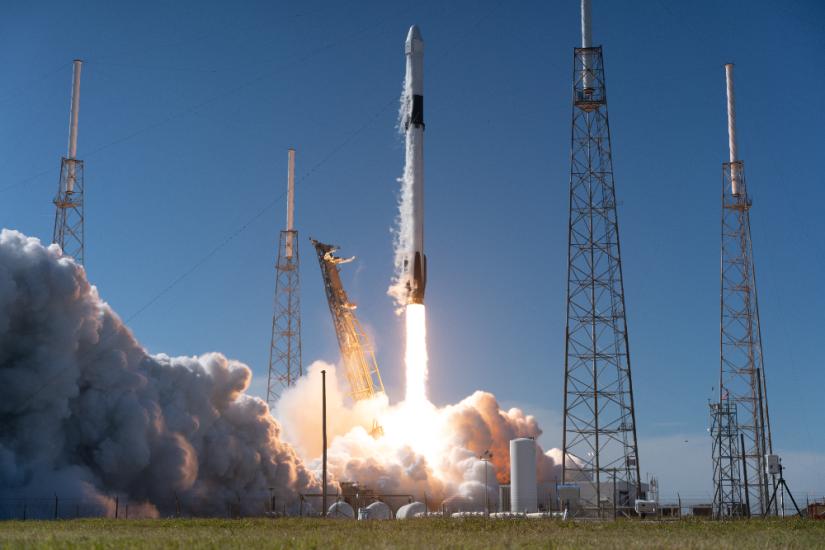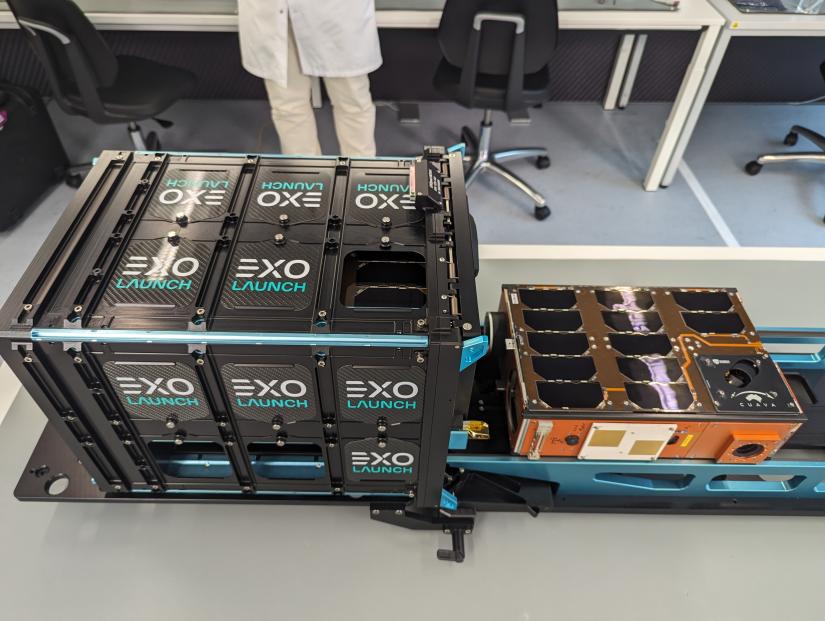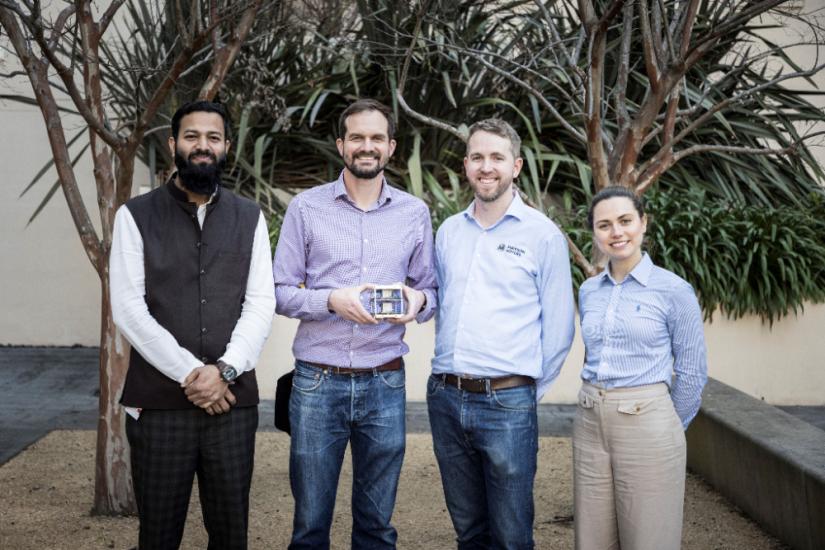UTS's first payload, to test new heatsink technology, will be sent into orbit this month as part of the Waratah Seed mission.

SpaceX rocket launch. Image: Adobe Stock
SpaceX’s Falcon 9 rocket will take off this month carrying Australia’s first “ride-share” satellite. Hitching a ride will be a payload containing new heat management technology to extend the life of space electronics, developed by researchers from the University of Technology Sydney (UTS).
The ride-share mission known as ‘Waratah Seed’ is an Australian-built CubeSat, funded by the NSW government through their Space Industry Development program. It will carry a number of experiments to test and prove new technology, including UTS’s first payload.
UTS Associate Professor Nick Bennett is leading the UTS project, called the “Matilda” payload, to test the new heatsink technology. The innovative 3D-printed structure is designed to transfer heat from computer chips to a phase change material, which stores heat as it melts.
“We are really excited to be part of the Waratah Seed mission. Matilda represents the first ever spaceflight payload built by UTS. It wouldn’t have been possible without strong industry collaborations and funding support, particularly from the SmartSat CRC,” he said.

Waratah Seed is integrated into the satellite deployment system 'Exolaunch'. Image: ARC Training Centre for CubeSats, UAVs and their applications (Cuava)
Associate Professor Bennett said thermal management is a major challenge for the next generation of satellites, which use increasingly sophisticated sensors to understand what’s happening on Earth or other worlds. The sensors create huge amounts of data, which requires greater onboard computational power and so generates more heat.
“Heat is one of the biggest challenges facing space electronics. With no air in space, you can’t put on a fan to cool things down. Instead, heat generated from electronic processes needs to dissipate through infrared radiation, a much slower process.”
“It’s critical that space electronics are reliable and long lasting. The current solution is to switch the electronics off to allow time for the heat to dissipate, however this is not optimal as it can leaves technology offline for a period of time.”
The UTS researchers have been working with start-up space companies Spiral Blue and Mawson Rovers on the project. Mawson Rovers developed the payload electronics and software for control of the heater and collection of thermal data while in orbit.
The team previously tested the new technology in the vacuum chambers at UTS Tech Lab. They also travelled to the Wombat XL thermal vacuum facility at Mt Stromlo for further detailed thermal performance tests.

Left-to-right: Dr Mohammad Arqam (UTS), A/Prof Nick Bennett (UTS), Matt Ryall (Mawson Rovers), Laryssa Sueza-Raffa (UTS). Photo: ARC Training Centre for CubeSats, UAVs and their applications (Cuava).
Once the satellite mission is launched, the team expects to run in-orbit experiments on their payload in August, to compare its thermal performance with experiments on Earth.
During the flight, the payload will use a heater to simulate the heat output of a computer chip, which will then melt the phase change material. The team will then compare the resulting thermal data between the flight system and thermal-vacuum tests performed on the ground.
Associate Professor Bennett says if the trial is successful, its application could reach beyond Earth’s orbit, where it could be applied to Mawson Rover’s lunar rover development program.

